Reminiscing
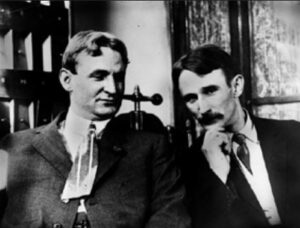
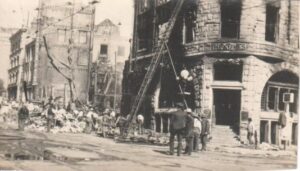 The battle between those who support unions and those who do not, has gone on for a long time, and each has its pros and cons. Unions help employers create a more stable, productive workforce…one in which workers have a say in improving their jobs. Unions help bring workers out of poverty and into the middle class. In fact, in states where workers don’t have union rights, workers’ incomes are lower. So, it is always “in the employer’s best interest” not to have a union, but really not in the best interest of the workers, for whom the working conditions can be sub-par, and even dangerous. Because of that, the battle between the two sides has raged on for many years.
The battle between those who support unions and those who do not, has gone on for a long time, and each has its pros and cons. Unions help employers create a more stable, productive workforce…one in which workers have a say in improving their jobs. Unions help bring workers out of poverty and into the middle class. In fact, in states where workers don’t have union rights, workers’ incomes are lower. So, it is always “in the employer’s best interest” not to have a union, but really not in the best interest of the workers, for whom the working conditions can be sub-par, and even dangerous. Because of that, the battle between the two sides has raged on for many years.
In the early 1900s, one such situation resorted to violence, and that violence came to a boiling point on October 1, 1910, when a suitcase bomb ignited a massive explosion that destroyed the Los Angeles Times building in the Los Angeles’ downtown area. The explosion killed 21 and 100 more people, all of whom were workers for the Los Angeles Times, who were working late to put out an early afternoon edition of the paper to celebrate the results of the Vanderbilt Cup auto race. Since Los Angeles Times publisher Harrison Otis was an extreme opponent of unions, he believed that the bomb was directed at him. With that in mind, he hired the nation’s premier private detective of that time, William J Burns, to crack the case. Otis was now a quiet opponent to unions, and in fact, he printed numerous editorials against unions. He was also the leader of the Merchants and Manufacturing Association, a powerful group of business owners with extensive political connections…and very much anti-union.
As Burns investigation progressed, it led him to the Bridge and Structural Iron Workers Union and their treasurer, John J McNamara. McNamara’s brother, James B (JB) was discovered to be the actual bomber. He left a suitcase with a dynamite bomb near barrels of flammable printer’s ink between the Los Angeles Times Building and the Times annex, known as “Ink Alley”, which contained the paper’s printing press. The dynamite had a detonator connected to a mechanical windup clock, set to close an electric battery circuit at 1:00am, and set off the explosion. JB left similar bombs, also set to explode at 1:00am, next to the homes of both Times publisher, Otis and Felix Zeehandelaar, secretary of the M and M. He then boarded a train to San Francisco so he could have credible evidence that he was out of town when the bomb at the Times building went off.
In April 1911, after Burns got a confession out of Ortie McManigal, who had allegedly been the intermediary between McNamara and two bomb experts, he personally arrested John McNamara and his brother, James in Indiana. Burns also managed to get the brothers to California, without any legal authority, where they were to be prosecuted.
In an immediate response, union members and left-wing supporters alike, rallied around the McNamara brothers. They quickly raised a large defense fund, and union representatives pleaded with Clarence Darrow to take the case. Darrow, who was the best defense attorney America had to offer at that time. He was noted for getting “Big Bill” Haywood, the union leader of the Industrial Workers of the World, off on murder charges in Idaho a few years earlier. They offered him $50,000, and he found that he just couldn’t resist, so he took the case. As the case progressed, Darrow began to realize that the McNamara brothers were guilty, and as evidence mounted, he worked a deal in which JB McNamara pled guilty and received life in prison, as opposed to the death penalty. Despite repeated attempts by left-wing labor leaders and certain politicians to win his release, he refused to file any parole requests. James B (JB) McNamara died of cancer in San Quentin on March 9, 1941. John J (JJ) McNamara received 17 years in prison. JJ McNamara left prison after nine years, and the 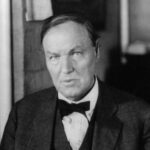
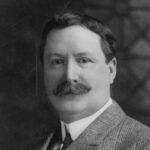 Iron Workers’ union welcomed him back as an organizer. He was convicted of threatening the destruction of a building unless the contractor hired union members and was sent back to prison. Released once more, the union discovered that he had embezzled $200, and fired him. JJ spent the rest of his life drifting from job to job, and died in Butte, Montana on May 8, 1941. In all, 40 additional co-conspirators were convicted of various crimes and served various sentences, but it was always thought that the McNamara brothers were the ring leaders, and that they others had bit parts in the attack.
Iron Workers’ union welcomed him back as an organizer. He was convicted of threatening the destruction of a building unless the contractor hired union members and was sent back to prison. Released once more, the union discovered that he had embezzled $200, and fired him. JJ spent the rest of his life drifting from job to job, and died in Butte, Montana on May 8, 1941. In all, 40 additional co-conspirators were convicted of various crimes and served various sentences, but it was always thought that the McNamara brothers were the ring leaders, and that they others had bit parts in the attack.
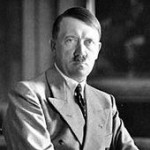
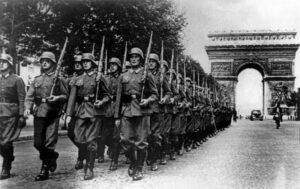 During World War II and even earlier really, Adolf Hitler was in the middle of his plan to take over the world. He was ruthless, and when he invaded a country, he didn’t care how many people died, as long as he got his way. The Battle of France took place between May 10, 1940 and June 25, 1940. The surrender of France to the Nazis in 1940 was a complex situation. The German invasion left metropolitan France at the mercy of Nazi armies. Really, once Paris fell on June 14, 1940, the German conquest of France was complete. Part of the problem was that Marshal Henri Petain replaced Paul Reynaud as prime minister and proved to be a weak leader who announced his intention to sign an armistice with the Nazis.
During World War II and even earlier really, Adolf Hitler was in the middle of his plan to take over the world. He was ruthless, and when he invaded a country, he didn’t care how many people died, as long as he got his way. The Battle of France took place between May 10, 1940 and June 25, 1940. The surrender of France to the Nazis in 1940 was a complex situation. The German invasion left metropolitan France at the mercy of Nazi armies. Really, once Paris fell on June 14, 1940, the German conquest of France was complete. Part of the problem was that Marshal Henri Petain replaced Paul Reynaud as prime minister and proved to be a weak leader who announced his intention to sign an armistice with the Nazis.
While not very well known at the time, French General Charles de Gaulle, made a broadcast on June 18, 1940, to France from England, where he would help with the resistance. The Appeal of June 18 was the first speech made by Charles de Gaulle after his arrival in London in 1940 following the Battle of France. The speech was broadcast to Vichy France by the radio services of the British Broadcasting Corporation (BBC). This speech is considered to have marked the beginning of the French Resistance in World War II. It is regarded as one of the most important speeches in French history. General de Gaulle said in his speech, “The leaders who, for many years, were at the head of French armies, have formed a government. This government, alleging our armies to be undone, agreed with the enemy to stop fighting. Of course, we were subdued by the mechanical, ground and air forces of the enemy. Infinitely more than their number, it was the tanks, the airplanes, the tactics of the Germans which made us retreat. It was the tanks, the airplanes, the tactics of the Germans that surprised our leaders to the point to bring them there where they are today.
But has the last word been said? Must hope disappear? Is defeat final? No!
Believe me, I speak to you with full knowledge of the facts and tell you that nothing is lost for France. The same means that overcame us can bring us to a day of victory. For France is not alone! She is not alone! She is not alone! She has a vast Empire behind her. She can align with the British Empire that holds the sea and continues the fight. She can, like England, use without limit the immense industry of United States.
This war is not limited to the unfortunate territory of our country. This war is not finished by the battle of France. This war is a world wide war. All the faults, all the delays, all the suffering, do not prevent there to be, in the world, all the necessary means to one day crush our enemies. Vanquished today by mechanical force, we will be able to overcome in the future by a superior mechanical force.
The destiny of the world is here. I, General de Gaulle, currently in London, invite the officers and the French soldiers who are located in British territory or who would come there, with their weapons or without their weapons, I invite the engineers and the special workers of armament industries who are located in British territory or who would come there, to put themselves in contact with me.
Whatever happens, the flame of the French resistance must not be extinguished and will not be extinguished.”
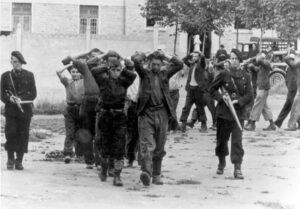
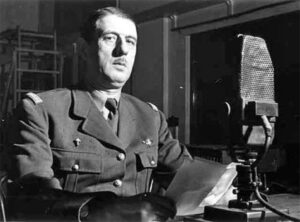 His work with the French Resistance made Charles de Gaulle almost a household word in France. It gave the people hope for freedom. The French Resistance fought to the death to beat the Nazis. This makes me think of current times, and all the freedoms that we have lost. These lessons from the French Resistance are valuable to this day. Never give up. You only lose a battle when you quit fighting. We must never quit fighting.
His work with the French Resistance made Charles de Gaulle almost a household word in France. It gave the people hope for freedom. The French Resistance fought to the death to beat the Nazis. This makes me think of current times, and all the freedoms that we have lost. These lessons from the French Resistance are valuable to this day. Never give up. You only lose a battle when you quit fighting. We must never quit fighting.
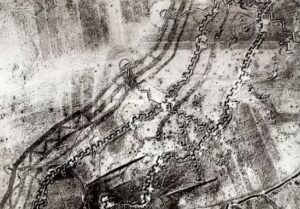
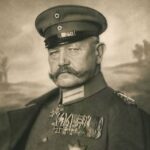 As World War I…the “War to end all Wars,” was coming to a close, there still remained one serious German stronghold that had to be taken down in order to ensure Allied success in winning the war. That stronghold, known to the Allies as the Hindenburg Line, an area they named after the German commander in chief, Paul von Hindenburg, was built in late 1916. The Germans called it the Siegfried Line. Either was, the Hindenburg Line was a heavily fortified zone running several miles behind the active front between the north coast of France and Verdun, near the border of France and Belgium. This area was a must win, must take back line, if the Allies were going to win the war.
As World War I…the “War to end all Wars,” was coming to a close, there still remained one serious German stronghold that had to be taken down in order to ensure Allied success in winning the war. That stronghold, known to the Allies as the Hindenburg Line, an area they named after the German commander in chief, Paul von Hindenburg, was built in late 1916. The Germans called it the Siegfried Line. Either was, the Hindenburg Line was a heavily fortified zone running several miles behind the active front between the north coast of France and Verdun, near the border of France and Belgium. This area was a must win, must take back line, if the Allies were going to win the war.
The German army was working hard to make it very difficult to break through the Hindenburg line by September 1918. At that time, the German line consisted of six defensive lines. The zone formed by these six lines measured some 6,000 yards deep, and it was ribbed with lengths of barbed wire and dotted with concrete emplacements to be used as firing positions. It was a fortress that the Germans were sure would be impenetrable. However, while the Hindenburg Line was heavily fortified, it was not without weakness. Its southern part was most vulnerable to attack, because it included the Saint Quentin Canal, and the entire area was not totally out of sight of artillery observation by the enemy. Any attack by the Allies would need to come through this weakness. Another weakness was that the whole system was laid out linearly, as opposed to newer constructions that had adapted to more recent developments in firepower and were built with scattered “strong points” laid out like a checkerboard to enhance the intensity of artillery fire. These things would be the saving grace for the Allies, and the downfall for the Germans.
Knowing these vulnerabilities, the Allies began to concentrate all the force built up during their so-called “Hundred Days Offensive,” to their advantage. The operation kicked off on August 8, 1918, and by late September, the Allies had gained a decisive victory at Amiens, France, against the Hindenburg Line. Australian, British, French, and American forces participated in the attack on the Hindenburg Line. The attack began with a huge bombardment, using 1,637 guns along a 10,000-yard-long front. The final 24 hours of the offensive saw the British firing a record 945,052 shells. After capturing the Saint Quentin Canal with a creeping barrage of fire…126 shells for each 500 yards of German trench over an eight-hour period, the Allies successfully breached the Hindenburg Line on September 29, 1918.
The attack was pushed forward by Australian and United States troops, who, out of a must-win sense of urgency, attacked the heavily fortified town of Bellicourt with tanks and aircraft. The battle raged on for four days, with heavy losses on both sides. Finally, the Germans were forced to retreat. With Kaiser Wilhelm II 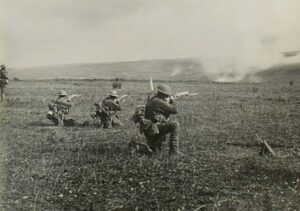
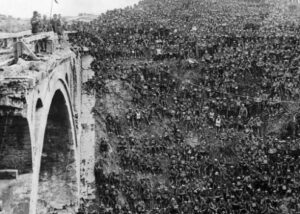 pressured by the military into accepting governmental reform and Germany’s ally, Bulgaria, suing for an armistice by the end of September, the Central Powers were in disarray on the battlefield, as well as the home front. The Allies continued to press their advantage on the Western Front throughout the month of October, and against their predictions, World War I came to an almost abrupt end on November 11, 1918.
pressured by the military into accepting governmental reform and Germany’s ally, Bulgaria, suing for an armistice by the end of September, the Central Powers were in disarray on the battlefield, as well as the home front. The Allies continued to press their advantage on the Western Front throughout the month of October, and against their predictions, World War I came to an almost abrupt end on November 11, 1918.
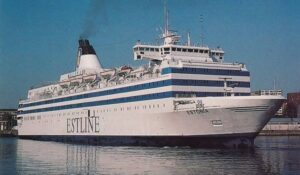
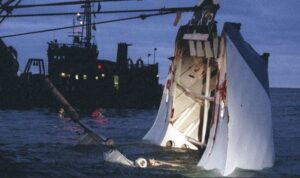 I love to ride on the Ferry boats in Washington state. It’s especially cool to have your car right there with you at the end of your journey. You just get in and go off to the rest of your adventure. Of course, a Ferry boat is just that…a boat, and that always leaves the possibility of one sinking. That has happened on numerous occasions. It seems to me though that most of the time when they sink, it is in open waters, and not the inland waters, such as the Puget Sound.
I love to ride on the Ferry boats in Washington state. It’s especially cool to have your car right there with you at the end of your journey. You just get in and go off to the rest of your adventure. Of course, a Ferry boat is just that…a boat, and that always leaves the possibility of one sinking. That has happened on numerous occasions. It seems to me though that most of the time when they sink, it is in open waters, and not the inland waters, such as the Puget Sound.
One such maritime disaster in open waters, occurred on September 28, 1994, when a large car-and-passenger ferry…MS Estonia, sank in the Baltic Sea, killing 852 people. MS Estonia was a cruiseferry built in 1980 at the West German shipyard Meyer Werft in Papenburg. The ship was sold to Nordström and Thulin in 1993, for use on Estline’s Tallinn–Stockholm route. Estonia departed slightly behind schedule that night, departing at at 7:15pm on September 27. It was expected in Stockholm the next morning at about 9:00am. The ship was carrying 989 people, which included 803 passengers and 186 crew. The seas were rough that night, and it was determined by a 1997 investigation, that the ship’s bow door locks had failed during the storm. However, new underwater footage appears to show a previously unrecorded 13-foot hole in the ship’s hull. Given that information, many people think that it might have been a Russian torpedo that took down the MS Estonia. Whatever the case may be, the sinking of Estonia was one of the worst maritime disasters of the 20th century.
The main reason for the new theory is that Estonia was traveling on an overnight cruise from Tallinn, the capital city of Estonia, to Stockholm, Sweden, when it sank off the coast of Finland. Estonia is a former Soviet republic that gained its independence in 1991, but the last Russian troops actually left in 1994. Tallinn was a popular and affordable travel destination for Swedes. The Estonia was a type of ferry known as a “ro-ro,” which featured a smorgasbord, live music, dancing and drinking, and allowed people to drive vehicles onto one end of the ship and drive off on the other end.
There is no doubt that the stormy weather played a part in the disaster, because in the storm, the waves reached an estimated 15 to 20 feet. The Estonia went down in the middle of the night. It went down so quickly, that many passengers were trapped inside the ship. Some were able to escape and managed to make it into lifeboats. Some of those later drowned in the frigid water or died from hypothermia. Out of the 989 souls on board Estonia, only 137 survived, most of those were rescued by helicopters.
Officially, a joint Swedish-Finnish-Estonian government committee ruled it an accident and blamed it on stormy 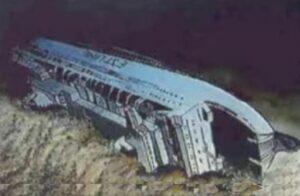
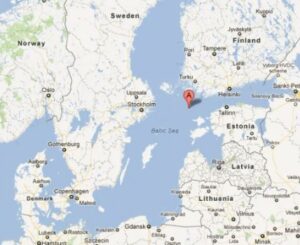 weather that caused water to pour through an open bow door and into the Estonia’s car deck, destabilizing the ship and capsizing it in less than an hour. Nevertheless, there were others, including some family and friends of the Estonia victims, who believed the sinking was the result of a pre-existing hole caused by a collision or explosion. I don’t suppose that the full truth will ever be known, but the loss of life will forever be felt.
weather that caused water to pour through an open bow door and into the Estonia’s car deck, destabilizing the ship and capsizing it in less than an hour. Nevertheless, there were others, including some family and friends of the Estonia victims, who believed the sinking was the result of a pre-existing hole caused by a collision or explosion. I don’t suppose that the full truth will ever be known, but the loss of life will forever be felt.

 Athena Salazar is my grandson, Josh Petersen’s fiancée, and they are planning for the soon arrival of their little baby boy. Athena and Josh met in middle school, and while they weren’t an item then, they became an item when they reconnected at work almost two years ago, they quickly knew that it was love. I have been so amazed at how perfect they are for each other. Each of them is the perfect complement to the other. Athena is such a gentle person, and at this stage in her life, she is very ready to be a mommy…very ready!! And Josh is growing and becoming the man of the house.
Athena Salazar is my grandson, Josh Petersen’s fiancée, and they are planning for the soon arrival of their little baby boy. Athena and Josh met in middle school, and while they weren’t an item then, they became an item when they reconnected at work almost two years ago, they quickly knew that it was love. I have been so amazed at how perfect they are for each other. Each of them is the perfect complement to the other. Athena is such a gentle person, and at this stage in her life, she is very ready to be a mommy…very ready!! And Josh is growing and becoming the man of the house.
Athena loves children. She has nieces and nephews who are very dear to her. She even works in a daycare center, which doesn’t surprise me, because it is very much the essence of Athena. She has a heart for people, but especially for children. I think she is going to be a wonderful mother. Athena also has a wonderful sense of 
 humor. She can be totally goofy one minute and very sentimental the next. That is really just what Josh needed in his life. Someone to laugh with, as well as live out all the romantic, sentimental dreams that they both have.
humor. She can be totally goofy one minute and very sentimental the next. That is really just what Josh needed in his life. Someone to laugh with, as well as live out all the romantic, sentimental dreams that they both have.
Athena is a mix of sunflowers and red roses…her favorite flowers. I like that. She is a little bit country sunshine and a little bit quiet romance. Her home is decorated largely in sunflowers, with red roses mixed in, which makes it feel bright and sunny. I remember when Josh lived alone, and his walls were almost empty. His place needed a woman’s touch, and that’s where Athena came in. Now their house is a home, and soon their baby boy will come and make them a family…and what a wonderful day that will be. They can’t wait to get their family started!!

 I love the couple that these two kids are. I can say kids, because I’m the grandma, and they will always be the kids to me. Grandmas can get away with that. I love how in love these kids are, and I can’t wait to see where their future takes them. Their pregnancy pictures are so cute, and I love how Josh is doing the “sympathy pregnancy” act, so Athena doesn’t feel alone. I’m not even sure he realizes it. He just loves her so much that it comes naturally. Today is Athena’s birthday. Happy birthday Athena!! Have a great day!! We love you!!
I love the couple that these two kids are. I can say kids, because I’m the grandma, and they will always be the kids to me. Grandmas can get away with that. I love how in love these kids are, and I can’t wait to see where their future takes them. Their pregnancy pictures are so cute, and I love how Josh is doing the “sympathy pregnancy” act, so Athena doesn’t feel alone. I’m not even sure he realizes it. He just loves her so much that it comes naturally. Today is Athena’s birthday. Happy birthday Athena!! Have a great day!! We love you!!
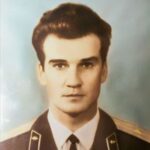
 Through the years, there have been a few men who made a conscious decision not to engage in an act of war. One such officer was submarine officer Vasili Arkhipov, who avoided nuclear war during the Cuban Missile Crisis in 1962. He wasn’t alone in seeing the insanity of launching a nuclear weapon, however. Another Soviet officer, Lieutenant Colonel Stanislav Petrov, made the same decision not to launch an attack that could have triggered a nuclear exchange on September 26, 1983. These two men basically disobeyed an order to launch their respective nuclear attacks, to their credit.
Through the years, there have been a few men who made a conscious decision not to engage in an act of war. One such officer was submarine officer Vasili Arkhipov, who avoided nuclear war during the Cuban Missile Crisis in 1962. He wasn’t alone in seeing the insanity of launching a nuclear weapon, however. Another Soviet officer, Lieutenant Colonel Stanislav Petrov, made the same decision not to launch an attack that could have triggered a nuclear exchange on September 26, 1983. These two men basically disobeyed an order to launch their respective nuclear attacks, to their credit.
Petrov was part of the Soviet Air Defense Forces, stationed at the Serpukhov-15 bunker near Moscow. September 26, 1983, started out as a typical Monday, but it would end as anything but a typical day. That day, just three weeks after the Soviet military had shot down Korean Air Lines Flight 007, Petrov was the duty officer at the command center for the Oko nuclear early-warning system. Suddenly, the system reported that a missile had been launched from the United States, followed by up to five more. For anyone who has seen the movie, “War Game” it would seem like a video game gone rouge. Apparently, it seemed much like that for Petrov too, because he judged the reports to be a false alarm.
While Petrov saw that this attack could not be, his superiors could not see that, and they ordered the counterattack. Petrov made the decision to disobey orders, against Soviet military protocol, and this could have meant grave consequences for him. This was Russia, after all. Nevertheless, Petrov is credited with having prevented an erroneous retaliatory nuclear attack on the United States and its NATO allies that could have resulted in a large-scale nuclear war. That war could have wiped out half of the population of the countries involved. Petrov had to truly believe that what he saw with his eyes, was not reality. Every second counted…attack or stand down!! Petrov chose to stand down!! An investigation later confirmed that the Soviet satellite warning system had indeed malfunctioned. There was no attack coming from the United States. The decision Petrov made, not to launch a retaliatory nuclear strike amid this incident, caused Petrov to be credited as having “saved the world” and by refusing to launch an attack, potentially saving millions, if not billions of lives.
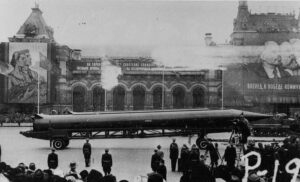
 I don’t recommend that orders always be disobeyed or taken lightly, but I think it is vital for soldiers, officers, and even civilians, to consider the consequences on both sides, and maybe…just maybe, disasters can sometimes be avoided. Launching nuclear missiles, is truly a last-ditch act. It cannot be reversed, and if these missiles are launched, people will die. And in the case of Petrov, it would have all been for nothing.
I don’t recommend that orders always be disobeyed or taken lightly, but I think it is vital for soldiers, officers, and even civilians, to consider the consequences on both sides, and maybe…just maybe, disasters can sometimes be avoided. Launching nuclear missiles, is truly a last-ditch act. It cannot be reversed, and if these missiles are launched, people will die. And in the case of Petrov, it would have all been for nothing.

 Jolene Thompson is my niece, Kellie Hadlock’s boyfriend, Tim Thompson’s daughter, and she is such a little sweetheart. She always has a smile on her face, and she is totally fearless. She is a totally tough little girl. She is an amazing big sister to her siblings, and helps take care of them, but this summer, she got to spend with her dad, and they had the best summer. Jolene is in 1st grade this year, and she spent the summer learning to ride her bike and learning how to swim. She excelled at both new skills and can’t get enough of them. Her dad is a great teacher, and he guided his little girl to the level of expert in no time. She
Jolene Thompson is my niece, Kellie Hadlock’s boyfriend, Tim Thompson’s daughter, and she is such a little sweetheart. She always has a smile on her face, and she is totally fearless. She is a totally tough little girl. She is an amazing big sister to her siblings, and helps take care of them, but this summer, she got to spend with her dad, and they had the best summer. Jolene is in 1st grade this year, and she spent the summer learning to ride her bike and learning how to swim. She excelled at both new skills and can’t get enough of them. Her dad is a great teacher, and he guided his little girl to the level of expert in no time. She 
 even jumped off of the high dive in Thermopolis without hesitation…multiple times!! She is totally fearless in all aspects of her life.
even jumped off of the high dive in Thermopolis without hesitation…multiple times!! She is totally fearless in all aspects of her life.
Jolene loves to draw and color. She has that creative gene, I think. She also loves to brush and style Kellie’s hair, which if you know my family at all, is like the greatest blessing ever. Some people hate to have their hair touched, but our family…can’t get enough of having our hair brushed, styles, or just touched. Some people might call that weird, but if you like having your hair brushed and such…well, you just know what I mean. With Kellie, Jolene gets to do all the girly things that she doesn’t get to do normally, because at home, either with her dad or her mom, there is no doing the girly things. Not everyone likes the dress-up, fix the hair, girly things. That is a blessing for both Jolene and Kellie. They are best friends, and they love each other very much.


During her summer with her dad, Jolene got to do a lot of camping, hiking, and shooting. She also got to go fishing, and of course bicycling and swimming. She had a totally blissful summer. Her and her dad had a great summer…and they did all the things!! They went to a rock-climbing wall place, and Jolene climbed like an expert there too. She also showed off her climbing skills on the trees in the campgrounds she and her dad stayed in. Jolene got her first bow this year too and learned archery. Tim is a total outdoorsman, and Jolene wants to do everything her dad does, so she is eager to learn and to reach expert level. Today is Jolene’s 7th birthday. Happy birthday Jolene!! Have a great day!! We love you!!
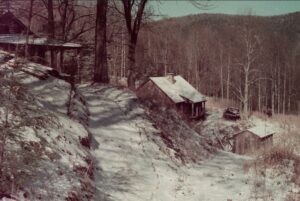
 As America grew, towns popped up in many places, only to dwindle into ghost towns when the expected industry that motivated their beginning, fell through. Lost Cove was one such town. Established just before the Civil War, it was once a thriving agricultural community, but then in the early 20th century, logging replaced farming, and the railroad brought workers. Somehow in the shuffle of changes, Lost Cove found itself off the beaten path, almost hidden in the forest, with no electricity or running water. The little town had to figure out something new, and so, because of the remoteness and because the town lay on the North Carolina/Tennessee border, an equally thriving moonshine industry was born.
As America grew, towns popped up in many places, only to dwindle into ghost towns when the expected industry that motivated their beginning, fell through. Lost Cove was one such town. Established just before the Civil War, it was once a thriving agricultural community, but then in the early 20th century, logging replaced farming, and the railroad brought workers. Somehow in the shuffle of changes, Lost Cove found itself off the beaten path, almost hidden in the forest, with no electricity or running water. The little town had to figure out something new, and so, because of the remoteness and because the town lay on the North Carolina/Tennessee border, an equally thriving moonshine industry was born.


Many people might think that the moonshine industry was all due to prohibition, and that is largely true, but while bootlegging was a crime of opportunity, it was also quite likely to be a crime of necessity. Still, while moonshine could provide a living for the residents, it would never be able to sustain a whole ton for very long. Eventually, the residents of Lost Cove began to move away to laces where they could make a living. The town, now empty, seen fell into disrepair. These days Lost Cove is a graveyard of abandoned homes and crumbling gravestones. Because Lost Cove was on the border, either state could have agreed on jurisdiction to collect tax revenues, but both declined to, thereby creating a haven for bootlegging.
Even with the logging business doing well, the timber eventually thinned and the railroad service that brought passenger trains through the area stopped. With that, the Lost Cove residents became even more isolated. The nearest stores were eight miles away, and they would have to walk for basic supplies, mostly because they didn’t have money for any other form of transportation. Soon the infrastructure deteriorated too, and the rough 
 or non-existent roads led to even more shortages. In the end, here was nothing left, but to leave. The last known resident left in 1957. Sadly, in 2007, a fire destroyed most of what still stood in Lost Cove. All that is left now is a few structures, memories, and the history of the area, only seen by the occasional hiker, using trails that remain the only route of access.
or non-existent roads led to even more shortages. In the end, here was nothing left, but to leave. The last known resident left in 1957. Sadly, in 2007, a fire destroyed most of what still stood in Lost Cove. All that is left now is a few structures, memories, and the history of the area, only seen by the occasional hiker, using trails that remain the only route of access.
 Man has always been interested in the stars and planets, even before we really knew what they were. Those mysterious lights in the sky that somehow just showed up every night and disappeared every morning, only to be replaced with the bright sunlight, quickly became a part of our lives from the time we were born. The main thing that has changed over the centuries is the equipment with which we could view space for ourselves.
Man has always been interested in the stars and planets, even before we really knew what they were. Those mysterious lights in the sky that somehow just showed up every night and disappeared every morning, only to be replaced with the bright sunlight, quickly became a part of our lives from the time we were born. The main thing that has changed over the centuries is the equipment with which we could view space for ourselves.
On September 23, 1846, Johann Gottfried Galle, a German astronomer from Radis, Germany, at the Berlin Observatory with the assistance of student Heinrich Louis d’Arrest, was the first person to view the planet Neptune and know what he was looking at. Of course, other astronomers had seen other planets, but this was the first time anyone actually saw the eighth planet in our solar system. Neptune was believed to be out there in that position, as French astronomer Urbain-Jean-Joseph Le Verrier had calculated the approximate location of the planet to be. Le Verrier, by studying gravity-induced disturbances in the  motions of Uranus guessed that another planet was there. He then told Galle of his findings on the 23rd, and the same night Galle and his assistant Heinrich Louis d’Arrest identified Neptune at their observatory in Berlin. Basically, they looked at its movement against a background of stars over 24 hours and that confirmed that it had to be a planet…seeing a place where the stars were blocked by “something” or in this case, Neptune.
motions of Uranus guessed that another planet was there. He then told Galle of his findings on the 23rd, and the same night Galle and his assistant Heinrich Louis d’Arrest identified Neptune at their observatory in Berlin. Basically, they looked at its movement against a background of stars over 24 hours and that confirmed that it had to be a planet…seeing a place where the stars were blocked by “something” or in this case, Neptune.
Neptune is a blue gas giant, which has a diameter four times that of Earth. The astronomers named it after the Roman god of the sea…why do they always use the Greek or in this case Roman gods? Neptune has eight known moons, of which Triton is the largest. It also has a ring system containing three bright and two dim rings. It completes an orbit of the sun once every 165 years. Since Pluto was “deplanetized” in 2006, because it was demoted to dwarf planet, Neptune became the farthest known solar planet. While it may be the furthest out, it  is not the smallest, but rather it’s the fourth-largest planet by diameter, the third-most-massive planet, and the densest giant planet. Neptune’s mass is 17 times the mass of Earth, and slightly more massive than its near-twin Uranus. Neptune is more dense and physically smaller than Uranus, because its greater mass causes more gravitational compression of its atmosphere. It is referred to as one of the solar system’s two ice giant planets
is not the smallest, but rather it’s the fourth-largest planet by diameter, the third-most-massive planet, and the densest giant planet. Neptune’s mass is 17 times the mass of Earth, and slightly more massive than its near-twin Uranus. Neptune is more dense and physically smaller than Uranus, because its greater mass causes more gravitational compression of its atmosphere. It is referred to as one of the solar system’s two ice giant planets
In 1989, the US spacecraft Voyager 2 was the first human spacecraft to actually visit Neptune. Nevertheless, while much more has been learned about the eighth planet, the first person to actually find it was Johann Gottfried Galle, way back in 1846.

 I don’t think any of us could have foreseen the changes that would occur in ten short years of marriage. Jason Sawdon became my nephew when he married my niece Jessica Hadlock on August 18, 2012, in what they have dubbed “the most amazing, fun party celebrating love.” They have been celebrating ever since that day. When they got married, Jason was a patrolman for the Wyoming Highway Patrol. He still works for the Wyoming Highway Patrol, but in a different capacity these days. A little over a year ago, Jason was promoted to Sergeant of Equipment and Technology, in a change that unfortunately for the rest of the family, took his family from Casper to Cheyenne. So, in the next step in his decorated career, they moved to Cheyenne on June 5, 2021. It was hard for all of us to have them go, but it was the best thing for their family. Jason is no longer on the street, and his hours are much better for a family man. His girls need him home at night.
I don’t think any of us could have foreseen the changes that would occur in ten short years of marriage. Jason Sawdon became my nephew when he married my niece Jessica Hadlock on August 18, 2012, in what they have dubbed “the most amazing, fun party celebrating love.” They have been celebrating ever since that day. When they got married, Jason was a patrolman for the Wyoming Highway Patrol. He still works for the Wyoming Highway Patrol, but in a different capacity these days. A little over a year ago, Jason was promoted to Sergeant of Equipment and Technology, in a change that unfortunately for the rest of the family, took his family from Casper to Cheyenne. So, in the next step in his decorated career, they moved to Cheyenne on June 5, 2021. It was hard for all of us to have them go, but it was the best thing for their family. Jason is no longer on the street, and his hours are much better for a family man. His girls need him home at night.

They have spent the last year exploring their new city, and enjoying their new house, which Jason spent a lot of time refreshing for them before they moved in. This past year brough some sadness, in that they lost Daisy, their sweet Boxer dog, but now they have adopted a new Boxer dog that they named Riley. She has been so great for their family, and she is Jason and Jessi’s daughter, Adelaide’s best friend…and for Jason and Jessi, that means everything. As far as they are concerned, their little daughter, Adelaide is the best thing that has ever happened to them, and we all agree. She has been such a blessing.
Jason is such a happy person. He has a great sense of humor and loves to tease, but Jason also has a heart of gold. I will never forget what he did for my mom after my dad had passed away. Her birthday was on January 1st, so we always had a party for her. She and my dad always had their special dance. With Dad gone, mom 
 felt like “the forgotten dancer” until Jason took her out on the dance floor. She struggled to stand on her own, but he held her up, and she got her dance. That was the single most amazingly precious thing I have ever seen…and I will never forget his kindness to her. It meant the world to her. That is the essence of the kind of person Jason is…with everything and everyone. Anyone who has ever been on the receiving end of Jason’s kindness, knows just what I mean. Today is Jason’s birthday. Happy birthday Jason!! Have a great day!! We love you!!
felt like “the forgotten dancer” until Jason took her out on the dance floor. She struggled to stand on her own, but he held her up, and she got her dance. That was the single most amazingly precious thing I have ever seen…and I will never forget his kindness to her. It meant the world to her. That is the essence of the kind of person Jason is…with everything and everyone. Anyone who has ever been on the receiving end of Jason’s kindness, knows just what I mean. Today is Jason’s birthday. Happy birthday Jason!! Have a great day!! We love you!!

